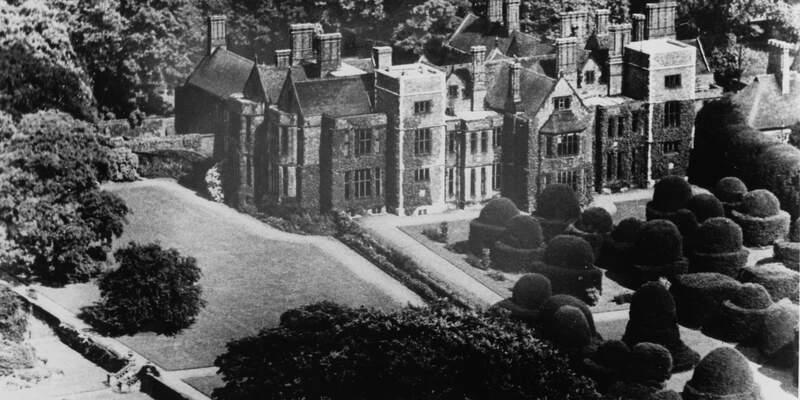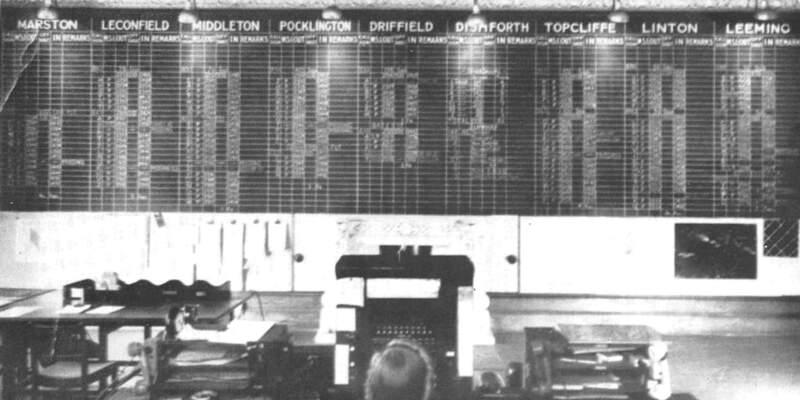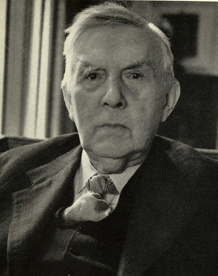
Our foundations
Though plans for a university in York first appeared as early as 1617, it would be over three centuries before they came to fruition.
A petition to establish a university in the city was drawn up in 1641 but was never sent to London because of the outbreak of the Civil War. Another was submitted to Parliament eight years later, which was rejected.
Discussions restarted in the 1820s but York's hopes were dashed due to the foundation of Durham University in 1832. It would be another 100 years before plans for a university in York were rekindled, marking the beginning of our journey.
Early 20th century
Before the Second World War, Heslington was a quiet rural retreat with a local aristocracy, and a working village with around 12 farms. It was a popular focus for city-dwelling families' Sunday walks.
Groceries were bought in the very modest village shop, and a bus stopped twice-weekly for trips into the city. Before the arrival of piped water in the 1930s, the whole village relied on pump water from the well. There was no electricity and the Charles XII pub was lit by gas.
.jpg)
Heslington Hall viewed across lake, mid 19th century.
Heslington Hall, a Grade II listed building near Heslington village, was constructed as country house in 1568. In the early 20th century, it was occupied by Nicholas de Yarburgh-Bateson, the 4th Baron Deramore, whose family had owned the property since 1708. The hall was rebuilt in both the 19th and 20th centuries and some original features still remain, including the pendant stucco ceiling over the great hall, some of the courtyard face and the staircase towers at the rear. The gardens were first formally landscaped in the early 18th century, including the gazebo and yews that now comprise The Quiet Place.
War years
With the outbreak of World War II, the Deramore family evacuated the Hall and the RAF took over, establishing the headquarters of 4 Group Bomber Command in the house and grounds.
Every night, the two village pubs were filled with servicemen and women. "Outside the Charles XII pub ... two young WRAF girls sat on a stuffed rhinoceros that had been left when everything had been sold off from the Hall. I was later told it had been shot by one of the Lord Deramores and had been left in the stables. The last I saw of it was ... when it was giving rides between the two pubs," wrote Donald Ward, retired Vanbrugh porter, in his Heslington Memories.

Bomber Command at Heslington Hall.
The year after the war ended, the Archbishop of York gave a sermon to the Company of Merchant Adventurers on 'The Value of History' and included a passage on the importance of universities and reasons why York was a suitable location. A year later, in 1947, an application was made by a group of local citizens to the University Grants Committee, but this was unsuccessful.
In 1948, York Academic Trust established the Institute of Advanced Architectural Studies and the Borthwick Institute.
A "bizarre" ambition?
The Deramores did not return to Heslington Hall after the war. It stood empty until the decaying house and its acres were bought in the 1950s by JB Morrell, who for many years had a long-cherished ambition to create a folk park.
His plans included a village green (with maypole), gypsy camp, water mill, urban street and boat house in the grounds of the Hall. However, as the possibility of a university became greater, Morrell felt that building this would be a worthier use for the site.
in 1959, another approach was made to the University Grants Committee to establish a university in York.
But the Hall and King's Manor, which were to be the University's core accommodation, had seen better days, and when Lord James, our founding Vice-Chancellor, came to view the site in 1960, he was left with very mixed feelings:
"King's Manor had passed into the ownership of York City Council which was using it as workshops for the blind. The courtyards were adorned with weeds, some of them literally head height. That this, or indeed Heslington Hall, could ever be even the most temporary home of a university seemed not so much improbable as positively bizarre," wrote Lord James.
Despite these initial misgivings, Lord James served as Vice-Chancellor of the University from 1962 to 1973, a period which he described as one of the most exciting in his life.
JB Morrell
Dr John Bowes Morrell was one of the key figures in the foundation of the University and often described as York’s greatest benefactor.
Born in 1873, JB Morrell was educated at Bootham School until the age of 17 when he left to join Rowntree and Co., rising to become the firm’s youngest director at 25. He served twice as Lord Mayor of York, was co-founder of York Civic Trust, founder of York Conservation Trust and produced several books on York’s history and architecture. He also instigated the opening of the Castle Museum, where many of JB’s own artefacts found a home, and was made an honorary freeman of the city.
The University, built partly on land he had acquired for a park at Heslington, is a major part of his immense legacy to the modern city of York. It is a fitting tribute that one of the university’s most prominent buildings - the JB Morrell Library - bears his name.
JB Morrell died in April 1963, just months before the first students arrived on campus to fulfil his ambitious academic vision.

.jpg)
.jpg)
 (2).jpg)